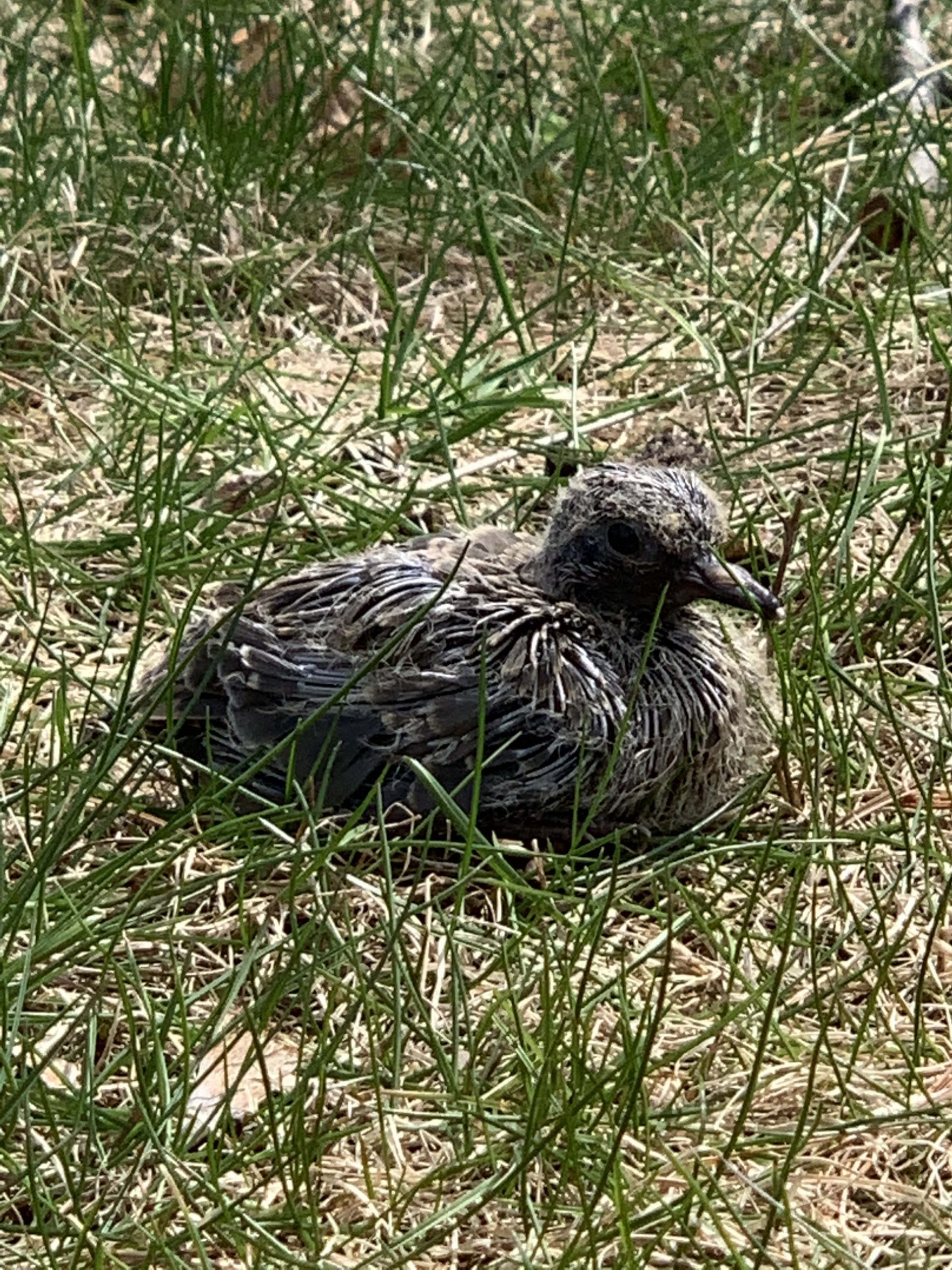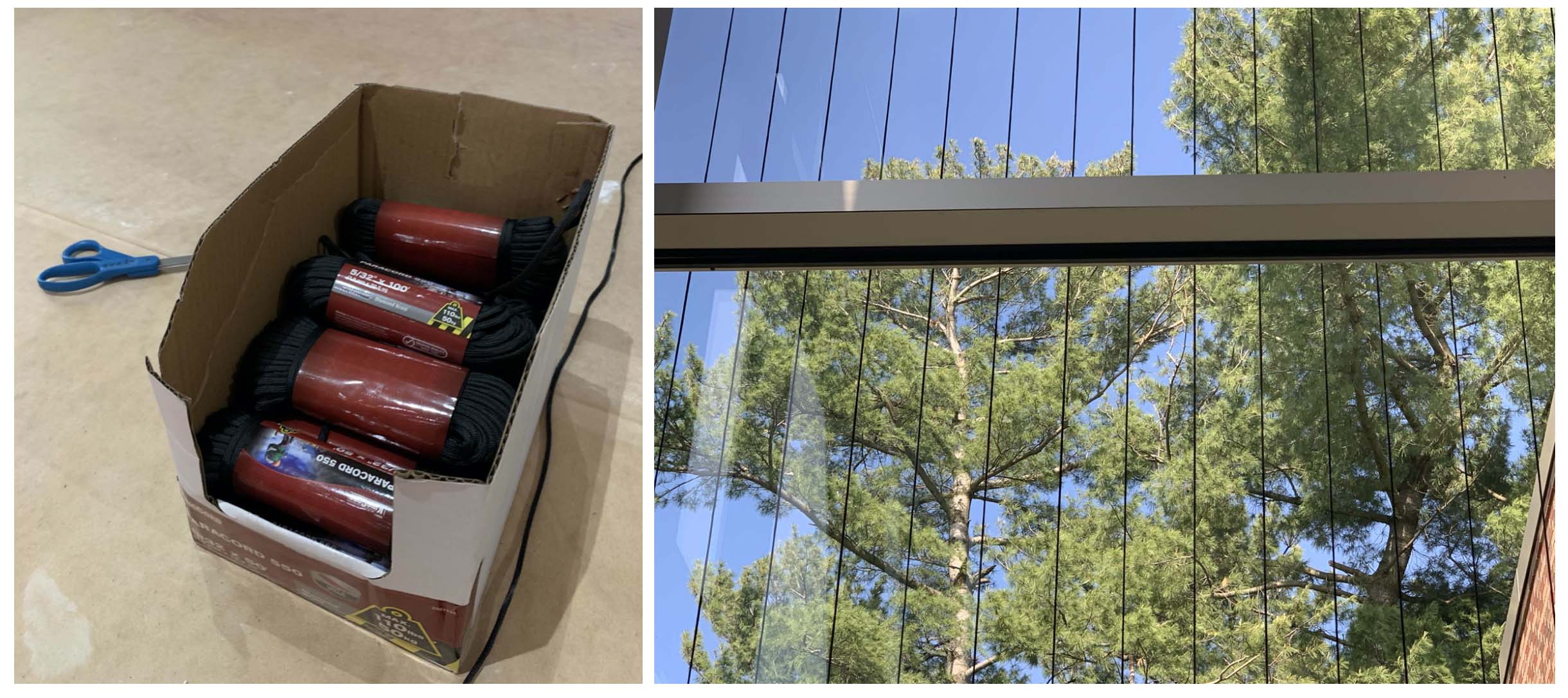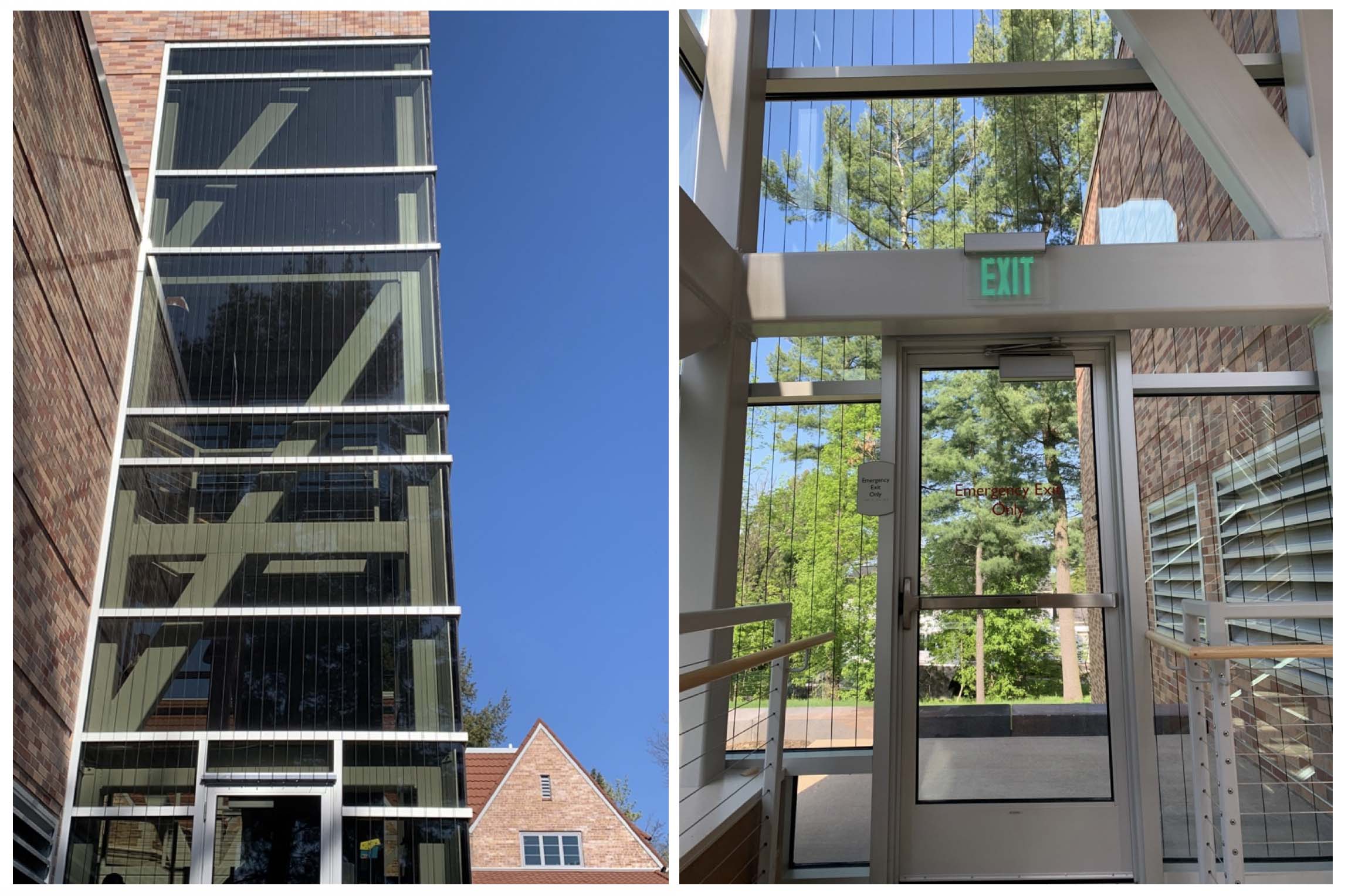It’s been quiet at the Woodson Art Museum and during the recent quarantine’s weeks of limited contact with Museum staff, the opportunity arose to tackle projects onsite that required blocks of time without interruption. While curator of collections Jane Weinke photographed collection artworks in her vaults, I developed art kits for remote learning programs, and Museum facilities manager Dave Jones worked inside and out addressing seasonal maintenance and building care. Occasionally, Dave needed help with something outdoors and I gladly volunteered to assist knowing it meant a chance for socially distanced contact with a coworker and, even better, time outside.

While helping Dave load the Museum’s trailer with yard waste, I spotted a small mourning dove nestling in the middle of the lawn. Too young and aloof to be a fledging, Dave and I started scanning for a nest. Mourning doves are not known for their nest-building prowess; the Cornell Lab of Ornithology describes the nests as “a flimsy assembly of pine needles, twigs, and grass stems, unlined and with little insulation for the young.” Having encountered mourning dove nests in high-traffic areas for people, I knew nesting doves weren’t averse to human presence so Dave and I decided if we found the nest, we’d return the bird. Sadly, what led us to find its flimsy nest was discovering of the young bird’s brood mate (mourning doves have clutches of two eggs) dead in the grass. We looked up and saw the nest, high in a crook of a tree. By this time, an adult dove appeared on the roof beside the tree, watching us closely as we positioned a twenty-foot ladder against the trunk. Nestling in hand, Dave climbed up and returned the dove to its nest; that’s the first tale of bird saving.
Catie and Dave’s second bird-saving tale came just in time for spring migration and involved hundreds of feet of black parachute cord.
After a conversation about bird-window strikes last fall with Wisconsin Department of Natural Resources Natural Heritage Conservation Program Integration Chief Craig Thompson, the Museum decided to install a bird-saver system.

To prevent birds from hitting the glass of the three-story, west-facing window in the Museum’s most recent addition, Dave worked up an in-house version of Acopian Bird Savers to create a visual deterrent for birds who mistake glass reflections and light for open skies. Using easily available hardware-store supplies like paracord, aluminum angle iron, and drill bits to attach the system into the grout of the building’s brick exterior, we installed a proven bird-saving system.

If you have a window that’s problematic for our feathered friends, the American Bird Conservancy and New York City Audubon’s building solutions guide is a fantastic resource. Perhaps bird-saving projects and quests are in store for you, too, this spring and summer.




